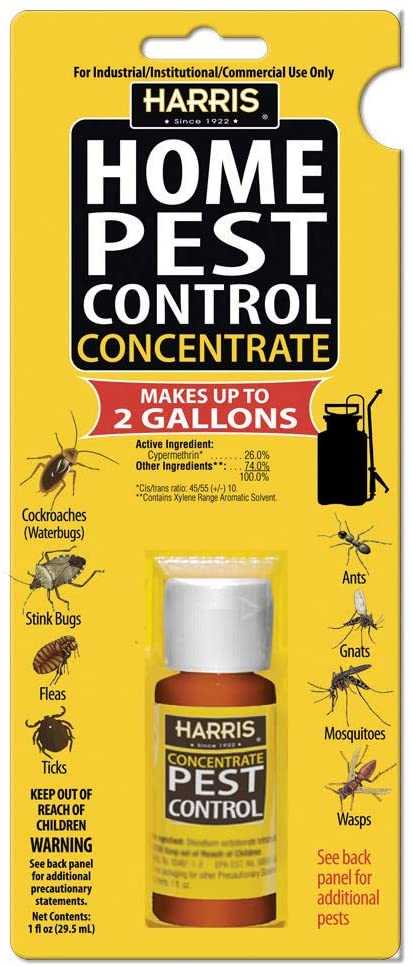Trusted A1 Bed Bug Exterminator Charlotte - Do Away With Bed Bugs Quick
Trusted A1 Bed Bug Exterminator Charlotte - Do Away With Bed Bugs Quick
Blog Article
Bed Insect Therapy Breakdown: Contrasting Chemical Vs. Non-Chemical Solutions
In the realm of insect control, specifically when handling the persistent issue of bed insects, the choice in between chemical and non-chemical therapy services can be a crucial one. Both techniques supply unique advantages and disadvantages, influencing variables such as efficiency, safety and security factors to consider, and general cost. By examining the nuanced information of each technique, a more clear understanding of which path to seek in addressing a bed insect invasion can be attained.
Effectiveness of Chemical Treatments
Chemical therapies for bed insect invasions have been extensively acknowledged for their powerful and quick efficiency in eradicating these insects. When considering the effectiveness of chemical treatments, it is crucial to comprehend that they can offer a quick and comprehensive service to a bed bug trouble.
Furthermore, chemical treatments have the advantage of supplying recurring effects, implying that they can proceed to remove bed insects also after the initial application. This residual action is specifically helpful in combating any type of possible re-infestations. In addition, the quick activity of chemical therapies can bring relief to people encountering serious bed bug invasions, allowing them to regain control of their home promptly.
Safety And Security Concerns With Chemical Solutions
When utilizing chemical remedies for bed bug therapy is making certain the safety and security of owners and the atmosphere,One vital element that requires cautious consideration. While chemical treatments can be reliable in eliminating bed bugs, they may present risks if not taken care of correctly. Among the main security worry about chemical options is the prospective damage they can cause to human health and wellness. Exposure to certain chemicals utilized in bed pest therapies can lead to respiratory system issues, skin inflammation, or various other negative reactions, especially in individuals with pre-existing problems or level of sensitivities. In addition, incorrect application or dosage of chemical pesticides can cause hazardous deposits sticking around in the treated location, posturing lasting health threats to owners.
In addition, the environmental influence of chemical solutions is one more substantial consideration. Some chemicals used in bed bug treatments may be unsafe to valuable bugs, wildlife, and ecosystems if they leach right into the soil or water supply. It is necessary to utilize chemical treatments sensibly, complying with security standards, and taking into consideration much less poisonous choices to reduce these risks and make sure the safe and reliable monitoring of bed pest infestations.
Advantages of Non-Chemical Methods
Considering the possible safety problems and environmental influence connected with chemical solutions for bed bug therapy, checking out non-chemical techniques presents an appealing choice with a number of distinct benefits. Non-chemical therapies are environmentally pleasant, as they do not add to air or water contamination, making them a sustainable choice for insect control.
Furthermore, non-chemical services can be efficient in targeting bed bugs, consisting of hard-to-reach areas where chemical therapies may not permeate. Methods such as heat treatment, vacuuming, steam cleaning, and cushion coverings give thorough elimination without using address damaging chemicals. In addition, non-chemical approaches can be less disruptive, calling for very little prep work and enabling quicker reentry into dealt with scorpion pest control areas. In general, choosing non-chemical bed pest therapy methods not just prioritizes safety and environmental protection yet additionally makes sure comprehensive and reliable insect control.
Limitations of Non-Chemical Treatments

Additionally, non-chemical therapies commonly need numerous applications to accomplish effective removal. This can be lengthy and may not constantly ensure complete removal of all bed insects and their eggs, specifically in hidden or hard-to-reach locations.
Additionally, the success of non-chemical therapies greatly counts on appropriate implementation and thoroughness, which can be testing for individuals without specialist competence. Inadequate application of non-chemical approaches may cause insufficient elimination, leading to relentless infestations and the requirement for extra therapies.
Consequently, while non-chemical treatments have their advantages, it is important to acknowledge these restrictions and consider them when establishing one of the most efficient approach for managing bed bug invasions.
Cost Comparison: Chemical Vs. Non-Chemical Options
Offered the constraints connected with non-chemical treatments, a crucial facet to evaluate in the context of bed pest management is the cost contrast in between chemical and non-chemical options. Chemical therapies commonly include the application of pesticides by experts, which can vary from $250 to $900 per space, depending on the seriousness of the infestation and the dimension of the area to be dealt with. In comparison, non-chemical treatments like warm therapy or steam can be a lot more expensive, with prices ranging from $1,000 to $6,000 for an entire home. While the preliminary expense of chemical therapies may seem lower, multiple therapies might be required to completely remove the infestation, possibly enhancing the overall cost. On the other hand, non-chemical choices may supply a much more environment-friendly and sustainable solution, although they can be cost-prohibitive for some individuals. Ultimately, when considering the price of bed insect therapy options, it is very important to evaluate the ahead of time expenditures against the performance and long-term sustainability of the selected method.
Verdict

Taking into consideration the possible security concerns and ecological influence associated with chemical services for bed bug therapy, discovering non-chemical methods presents a promising option with several distinct advantages.Given the limitations associated with non-chemical therapies, an important aspect to review in the context of bed insect management is the expense comparison in between chemical and non-chemical options. In contrast, non-chemical therapies like warm treatment or vapor can be a lot more expensive, with prices ranging from $1,000 to $6,000 for an entire home. While the preliminary price of chemical treatments might seem lower, several treatments might be needed to completely eliminate the invasion, potentially enhancing the total cost.In verdict, when comparing chemical and non-chemical bed pest therapy options, it is essential to take into consideration effectiveness, safety and security, benefits, constraints, and price.
Report this page